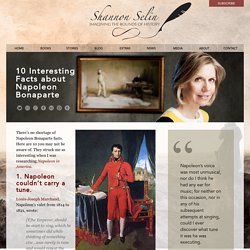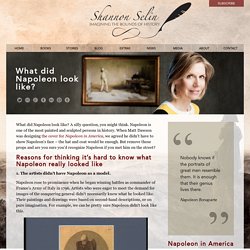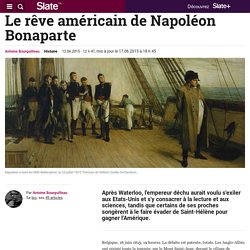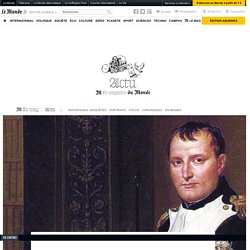

Betsy Balcombe. Lucia Elizabeth ″Betsy″ Balcombe Abell (1802 − 29 June 1871) was a friend of Napoleon I during his exile at Saint Helena.

She and her family's closeness to Napoleon attracted the suspicion of Governor Hudson Lowe. Biography[edit] Lucia Elizabeth Balcombe was born in 1802 as the second child of William and Jane Balcombe, née Cranston. Her father was Superintendent of Public Sales for the East India Company. Balcombe and her sister Jane, two years her senior, were educated in England and there taught the French language.
In October 1815 the former Emperor Napoleon was exiled to Saint Helena by the British government. After Napoleon was removed to Longwood House, Balcombe would often visit him. In May 1821, Betsy Balcombe married Edward Abell and had a daughter. In 1960, the Australian writer Dame Mabel Brookes (1890–1975), Betsy Balcombe's grandniece, bought "The Briars" and gave it to the French nation. Bibliography[edit] DVD Release[edit] External links[edit] What did Napoleon like to read? - Shannon Selin.
Napoleon reading Napoleon Bonaparte was a voracious reader.

He had a personal librarian, he always travelled with books, and he took a great interest in constructing the ultimate portable library to accompany him on his military campaigns. Napoleon’s taste in books was primarily classical. He had some lifelong favourite authors, including Plutarch, Homer and Ossian. What else did he like to read? Was Napoleon superstitious? - Shannon Selin. “The little red man rocking his son.

Here is my darling son who has given me so much satisfaction.” French caricature mocking Napoleon’s supposed superstition about the Red Man. Copyright McGill University. Napoleon Bonaparte was born in Corsica, an island known at the time for the “egregious superstition” of its inhabitants. (1) A 19th century guidebook observed that the Corsicans “believe in the mal’occhio, or ‘evil eye,’ and in witchcraft as sturdily as their ancestors of the sixteenth century.” (2) While Napoleon did not believe in witchcraft, he was prone to more everyday superstitions and has been credited with some fantastical beliefs.
Clisson et Eugénie, Napoléon Bonaparte, Peter Hicks, Émilie Barthet. 10 Interesting Facts about Napoleon Bonaparte - Shannon Selin. Napoleon as First Consul, by Jean-Auguste-Dominique Ingres.

Napoleon is hiding one of his beautiful hands. There’s no shortage of Napoleon Bonaparte facts. Here are 10 you may not be aware of. They struck me as interesting when I was researching Napoleon in America. 1. Louis-Joseph Marchand, Napoleon’s valet from 1814 to 1821, wrote: [T]he Emperor, should he start to sing, which he sometimes did while thinking of something else…was rarely in tune and would repeat the same words for 15 minutes. (1)
What did Napoleon look like? - Shannon Selin. What did Napoleon look like?

A silly question, you might think. Napoleon is one of the most painted and sculpted persons in history. When Matt Dawson was designing the cover for Napoleon in America, we agreed he didn’t have to show Napoleon’s face – the hat and coat would be enough. But remove those props and are you sure you’d recognize Napoleon if you met him on the street? Reasons for thinking it’s hard to know what Napoleon really looked like 1. Napoleon rose to prominence when he began winning battles as commander of France’s Army of Italy in 1796. Comment on pleurait, riait et aimait au Moyen Âge. Les émotions ont été oubliées, ignorées des chercheurs.

Un ouvrage mené de main de maître. Sensible Moyen Âge - Une histoire des émotions dans l’Occident médiéval Damien Boquet, Piroska Nagy Acheter ce livre. Le rêve américain de Napoléon Bonaparte. Belgique, 18 juin 1815, 19 heures.

La défaite est patente, totale. Les Anglo-Alliés ont résisté toute la journée, sur le Mont Saint-Jean, devant le village de Waterloo, aux assauts des Français. Puis, au milieu de l’après-midi, les Prussiens du général Blücher, aux trousses desquelles Napoléon avait lancé le général Grouchy, apparaissent sur le flanc droit des Français. Tout est perdu. La Garde impériale livre un baroud d’honneur tandis que l’armée française se replie, battue. Napoléon, le superman français. Certains le détestent, beaucoup l’adulent.

Mais, deux cents ans après la bataille de Waterloo, rares sont les puissants à rester indifférents au mythe Napoléon. A l’occasion du bicentenaire de la bataille de Waterloo, nous republions une enquête de Vanessa Schneider parue dans M Le magazine du Monde, le 22 août 2014. Pour y accéder, il faut une clé qu’il n’a pas sur lui et qu’il demande à un gardien, grimper un imposant escalier, débrancher une alarme. Le musée de Bruno Ledoux, homme d’affaires de 49 ans et actionnaire de référence du journal Libération, ne se donne pas facilement à voir. Il se niche dans le 7e arrondissement de Paris, à l’un des étages du somptueux hôtel particulier avec piscine et jardin dans lequel vit le collectionneur. Bruno Ledoux le fait rarement visiter, lui-même ne s’y rend pas souvent. . « Collectionnite » aiguë Il commence la visite par les moins spectaculaires de ses trésors, comme s’il voulait ménager l’effet de surprise.
Une pathologie intelligente.